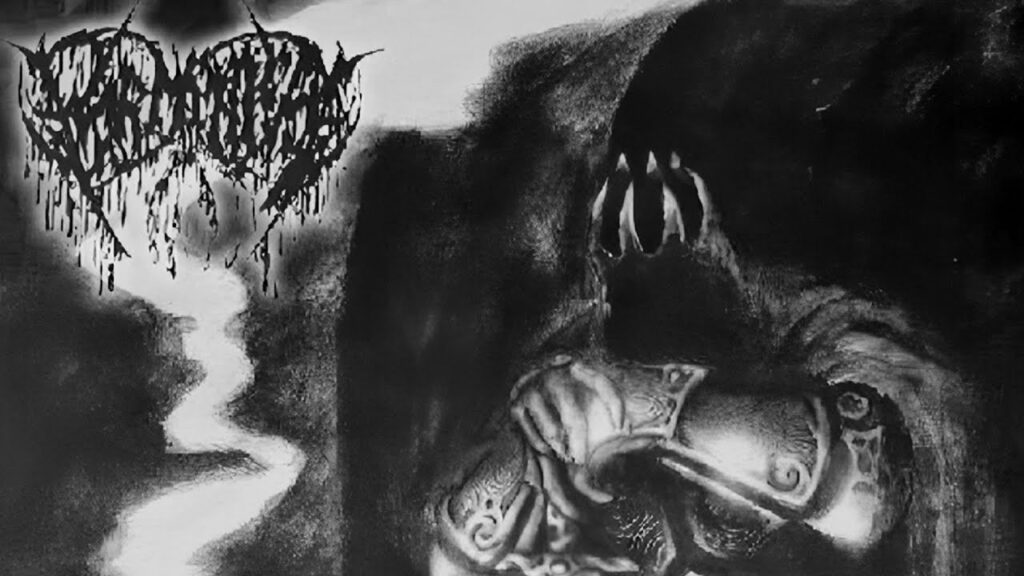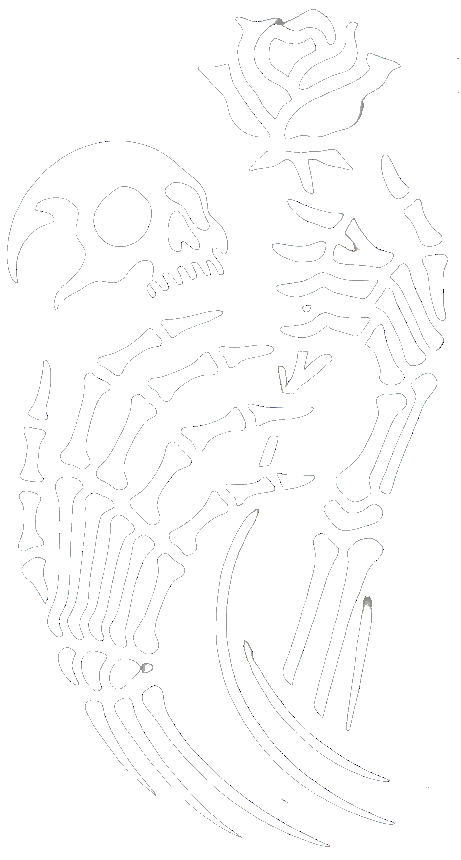Tortured screams from the catacombs of inquisitorial torture chambers, a dry, venomous riffing garnished with insane effects, samples from the imaginary tape archives of the Marquis de Sade, and sometimes a hauntingly simple production … Torture Doom is one of the dirtiest and most biting microgenres of Funeral Doom. While Ambient Funeral and Atmospheric Doom tend to approach the world in a more positive, or at least contemplative manner, Torture Doom remains the antithesis of any idea of redemption or happiness.
Parralax
If we approach Torture Doom as a philosophical engagement with the limits of the human subject and its existence in the face of suffering and destruction, the genre is defined by an extreme confrontation with pain and self-destruction. However, rather than seeking redemption or peace, as is often the case in other Funeral Doom subgenres, Torture Doom celebrates pain—not as something to be endured, but as the condition and truth of being itself. Slavoj Žižek described the subject as a battered and fragmented entity, always shaped by contradictions and ideological constructs. In his work, he speaks of the necessity to free oneself from the illusion of a constant, coherent identity. For Žižek, humans exist in a state of perpetual division, between the true self and the ideologically or socially constructed identity imposed from the outside. A struggle that bands like Esoteric and Funeralium take up at length. This clash between inner conflict and external pressure, often described as suffering, is the motor of human development and alienation. The question of “I,” of the “self,” of the “own,” becomes the manifestation of alienation and the reflection of the survival process in the face of destruction. According to Žižek, there is no redemption; the goal is the confrontation with one’s own destruction and the constant splitting of the self, and it is precisely this confrontation that we find in Torture Doom in its musical form. The pain in the music shows the edges of one’s existence and the wounds that the subject constantly carries with it. Without reaching a final point, suffering is the process, not the end.
For Žižek, the true nature of suffering is not the role of the victim, but the moment when the subject, confronted with its own suffering, recognizes a new form of truth. A path we particularly rediscover in the pain rituals of Sektarism. A paradoxical truth, however, that is disconnected from the external illusions of society or culture. The pain in the music becomes an expression of both physical and psychological torment, and a way of unfolding and realizing. It is the actualization of the knowledge of the impossibility of absolute self-determination. It is the expression of the awareness of the compulsion to exist in a world of conflict, contradictions, and destructive forces. The metaphorical (socially psychological representative) self-destruction in the music and the lyrics is the necessary condition for understanding one’s existence. It is no surprise that Esoteric, after giving themselves over to this self-destruction until “The Pernicious Enigma”, felt this path of realization was exhausted and thus began to explore new avenues.
Cross-references, influences, and parallels outside Funeral Doom
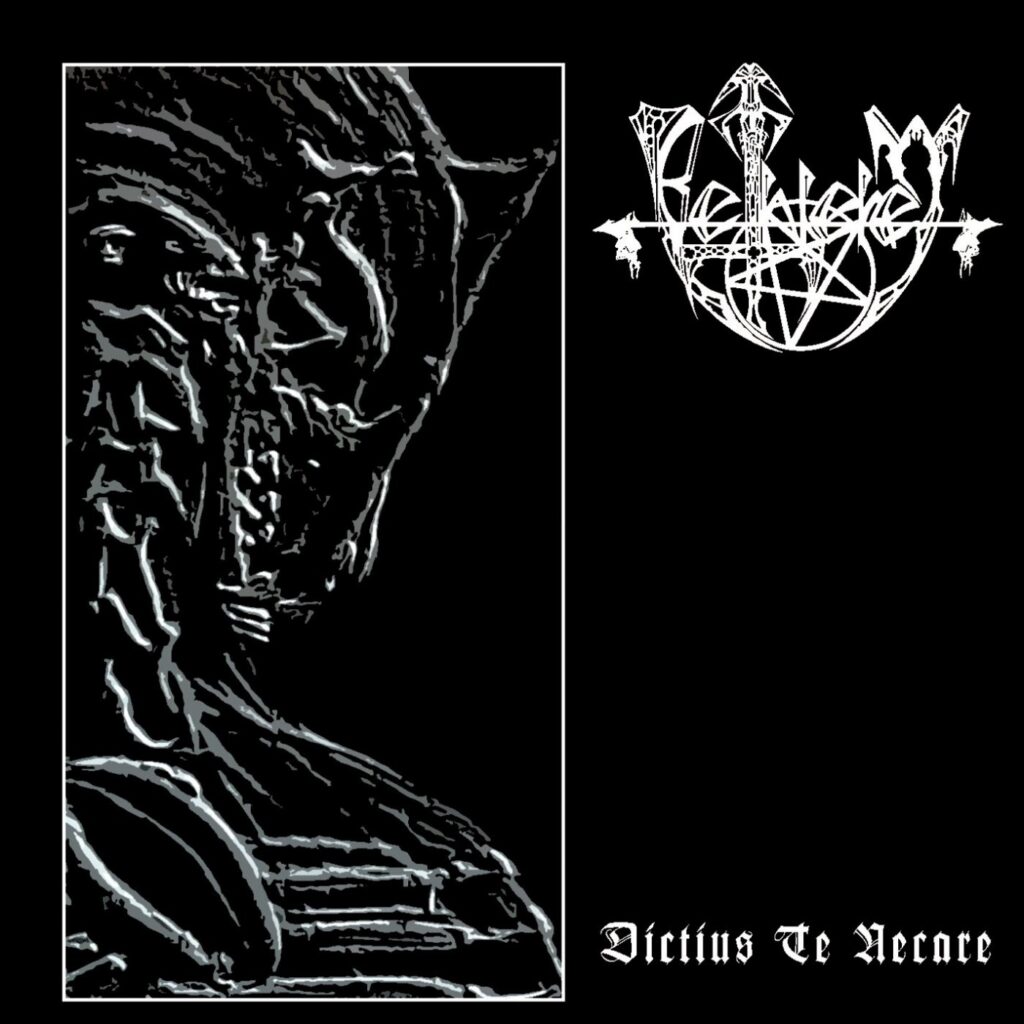
As a microgenre Torture Doom is best understood as the Funeral Doom brother of Depressive Suicidal Black Metal. DSBM musically borrowed ideas from Burzum and Bethlehem, from Black Metal in its purest form and a morbid and experimental appropriation, combining the atmosphere of early Gothic Metal (Paradise Lost: “Gothic”, My Dying Bride: “As the Flower Withers”, Tiamat: “The Astral Sleep”) with explicit death-wish and self-destructive rage.
Musically and historically, there are many overlaps. Specifically, the roots of both genres are deeply intertwined. The names Deinonychus and Bethlehem appear on both sides of this unequal partnership as significant influences, and more. Not least, Jonathan Théry from the French Torture Doom institution Funeralium also contributed as a singer to Bethlehem, as did Niklas Kvarforth from the DSBM initator Shining. Kvarforth later sang for the project Hjarnidaudi, re-recording their instrumental debut “Pain:Noise:March” as “Niklas Kvarforth Presents: Hjarnidaudi”. Such small and large collaborations and crossovers are numerous. Especially small, independent actors who record much of their work on their own have side projects from both genres.
Noise is certainly a broad field, musically referring to anything that, through intensive distortion, radical deformation, noise, and interference, challenges traditional musical parameters. Anything that deconstructs or negates melody, harmony, and rhythm, blurring the lines between music and noise, and challenging the perception of sound itself.
Noise, stemming from a potpourri of noise and music, has its cornerstones in Futurism, John Cage, Free Jazz, and Bruitism on the one hand, but on the other hand, it also refers to the fact that nearly every innovation in music was first perceived as noise and condemned. The Velvet Underground, a pop culture hub, turned noise into music, and Throbbing Gristle radicalized such ideas. Psychedelic Rock was interested in how sound works and how noise develops into music, and this aspect reflects in the wild cacophonies of the electronic representatives of Japanoise.
These are the two poles that Noise oscillates between: on the one hand, the freedom of sound development, and on the other, the deconstruction of music, its perception, and its culturally constructed definitions and distinctions. The music styles generally associated with Noise, such as Noiserock, Death Industrial or Harsh Noise Wall, can always be attributed to one or the other of these ideas.
This idea of deconstruction and sound development is inherently part of Torture Doom. Funeral Doom itself already leans toward the pure sound aesthetics of Dark Ambient, another substyle of Noise. Endless fading riffs, booming organ sounds, and minimal rhythmic subdivisions. It is well known that Thergothon and Skepticism worked closely with ideas from this noise substyle, and that Niko Sirkiä, like some musicians from Esoteric, also turned to Dark Ambient. Here, too, Funeral Doom musicians who discovered Post-Industrial/Noise styles such as Dark Ambient or Death Industrial, and vice versa, are legion. Further key pillars and parallels can certainly be found in Sludge, Post-Metal, and Drone Doom, particularly between Skin Chamber, Khanate and Abandon, but a description of those styles leads too far here. Just keep that connection in mind.
Prehistory
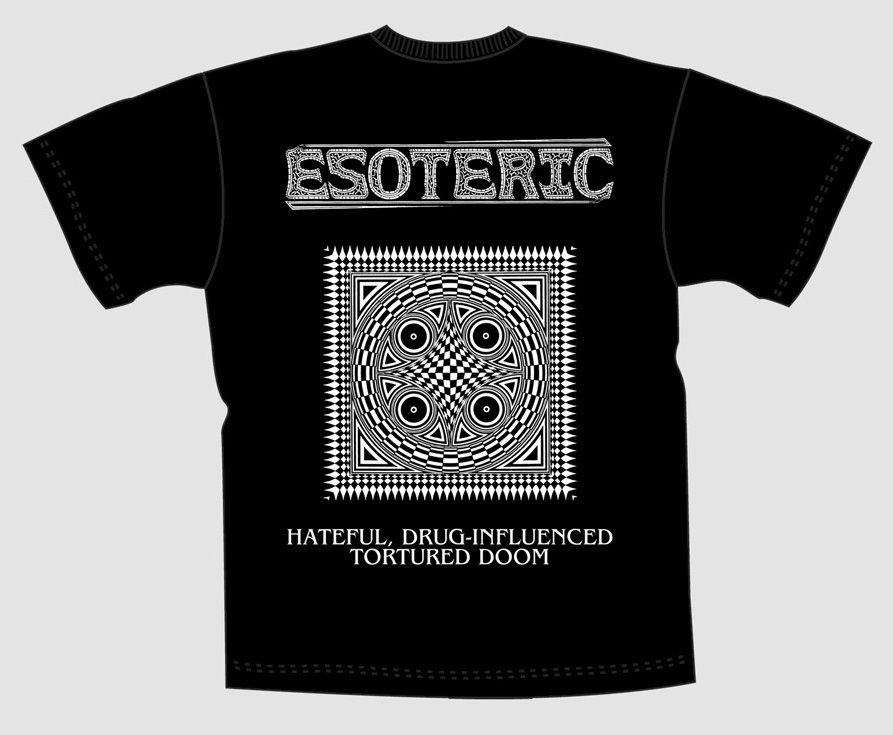
Without referencing Stu Gregg from Aesthetic Death as the creator of the term in the promotion of Esoteric’s “Epistemological Despondency”, one cannot begin the history of Torture Doom. For here we see not only the creation of the term but also the foretelling of the core idea by the band. Esoteric, with their first two albums, were undoubtedly musical forerunners of the microgenre: hallucinatory psychedelic effects turned into dirty and disturbing sounds, tortured screams, existential lyrics of self-destruction (though the depth of Esoteric’s work wasn’t matched by many later bands), sampling, and a production dripping with dirt. Esoteric planted a seed in 1994, which took a while to germinate, and three years later delivered “The Pernicious Enigma”, a further impulse that refined, perfected, and executed the ideas of their debut.
The second stone throw towards the subgenre came in 1999 with Worship’s legendary “Last Tape before Doomsday”. The vocal performance of Fucked Up Max fully embraced the tortured, disturbed, and deranged aspects of Torture Doom. It seemed as though Esoteric only needed to be combined with Worship to create the most revolting Doom imaginable.
A small and hidden idea-giver can also be Zaraza. The duo’s mix combined the music of Laibach, Godflesh, and Swans with that of Winter and My Dying Bride to create a unique monolith that made the ideas of Industrial and Noise usable for Death and Funeral Doom.
Esoteric turned away from sampling and pursued a new, still psychedelic but far less disturbed direction, Fucked Up Max took his own life in 2001 and Worship changed a bit of their direction, and Zaraza neither emerged from the Industrial Metal underground nor could they be fully categorized as Funeral Doom or Torture Doom.
Bloom
Others should carry on the ideas, bring them together, and expand upon them. Now, there are two ways to narrate the history after this pioneering effort. On the one hand, one could make a big leap and consider the genre highlight “Tomb of the Ancient King” from 2006 as the focal point of the history, as the core release of the genre, and the beginning of the Torture Doom era. And this would certainly not be wrong. With Deleuze and Guattari and their idea of rhizomatic thinking in the book “Mille Plateaux”, “Tomb of the Ancient King” could be seen as the impulse for the major plateau of that time. A level that appeared abruptly, took in the branching roots of Esoteric and Worship across the various demos and splits, and suddenly entered the consciousness because it simply seemed so significant and worthy of recognition.
According to Deleuze and Guattari, developments in philosophy do not occur linearly, but in leaps and sprawling steps with plateaus. Rather than linear development, they see the spread of ideas, cultures, and movements as an underground root structure, a rhizome: abrupt, connected, without beginning or end. At those points where developments then suddenly settle and new shoots emerge, plateaus are formed as phases in which a particular intensity is maintained before new leaps arise. There is no beginning and no end, only transitional states that point to potential transformation. These developments therefore do not occur in a linear or centralized way, but are decentralized, diverse, and uncontrolled, growing in their indefinite multiplicity. And this idea can be excellently applied to the development of music in general and the development of metal, doom, and funeral doom in particular.
“Tomb of the Ancient King” from 2006 marks the beginning of such a blossoming, a plateau of the subgenre, that time of great albums for Torture Doom. The point at which Torture Doom actually became a genre because it became so large and significant that the bloom had to be given a name. Alongside the album by Wormphlegem, the dirty, sludge-tinged debut by Wreck of the Hesperus, “The Sunken Threshold”, was also released. Funeralium released their self-titled debut a year later, weaving together Worship, Esoteric, and Bethlehem. Sektarism debuted in 2008 with their first ritual of self-punishment, ”L’offrande”. And the following year, Stabat Mater released their self-titled first album, which, full of torture samples, once again showed that the controverse Mikko Aspa (heavily involved in finnish neo-Nazi networks, and suspected of being a pedophile due to statements and publications in the context of his Noise projects) both indulged in his more than questionable penchant for the sound of tortured women and girls and, on the other hand, made a painful and disturbing impact as a vocalist in Funeral Doom. It must be admitted that his attempt to return to this genre in 2021 with the album “Treason by Son of Man” came across as somewhat generic, indifferent and inconsequential. Others of the early interpreters, however, continued to shine in the years following the genre’s peak. Funeralium created true genre highlights with “Of Throes and Blight” in 2017, just as Wreck of the Hesperus did in 2011 with “Lights Rotting Out”.
Roots
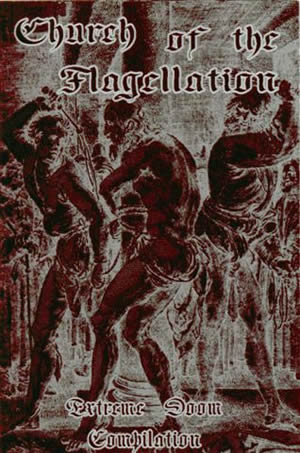
However, this plateau has a recognizable root system stemming from demos and split releases. The other version of the historical narrative looks back at this path and incorporates it.
One of the most important releases in this smoldering underground between the pioneers and the meager bloom starting in 2006 was the 2004 split MC “Church of the Flagellation”. With Stabat Mater, The Sad Sun, Bunkur, and Malasangre, a large part of the projects and minds between which the still nameless Torture Doom was brewing united on one record.
In addition to the already mentioned Stabat Mater, whose untitled track did not stand out particularly, there was The Sad Sun, a short-lived project by Stijn van Cauter and E.M. Hearst, which would soon give rise to The Nulll Collective. The Sad Sun offered a Funeral Doom that was both majestic and oppressive, uncompromising, crushing, and of the deepest blackness, with Hearst’s characteristic numerologically programmed and therefore unusual drum machine, caustic growls, distorted screams, and van Cauter’s shredding lead guitar tracks from that time, resulting in a heavy and massive overall sound. Hearst would later incorporate elements of Industrial Metal and Horror Metal in 2005 with the projects Wraith of the Ropes and Torture Wheel, particularly with “Ada” and “Crushed Under…”, adding more terror to the suffering. However, the categorizations here can again be questioned, and the root system of Torture Doom can be traced as vague branches and offshoots.
Bunkur, as the second participant of the split after Stabat Mater, offered the typically caustic wing of Drone Doom that would later become characteristic of Bunkur, with extended song structures and riffs. Any sense of melody disintegrates in their style, which traces back to Noise and moves close to Death Industrial. Thus, Bunkur stays close to the filthy, broken atmosphere of Khanate, with insane and tormented half-screamed grunts. The track is the longest on the split, at about half an hour.
Lastly, the Italians Malasangre, who debuted in 2002 with “A Bad Trip to…”, offer a masterclass in Torture Doom with “Revelations CCXXIX”. It has everything: the heavy, hypnotic wandering riffs, the sick vocals from growling to screaming and shrieking, strangely detuned keyboards, and the fitting samples.
Between these root branches, there are other actors such as the solo project Uncertainty Principle, which began in 2003 to combine Noise with Extreme Doom and released a split EP with Torture Wheel in 2003. Stabat Mater, Wormphlegm, and Funeralium had also already released demos and splits before 2006. The American project Senthil also released demo, split, and EP between 2005 and 2007, offering an idiosyncratic, sick Noise-Funeral hybrid that can be seen as another precursor to Torture Doom.
A Sparse Foliage
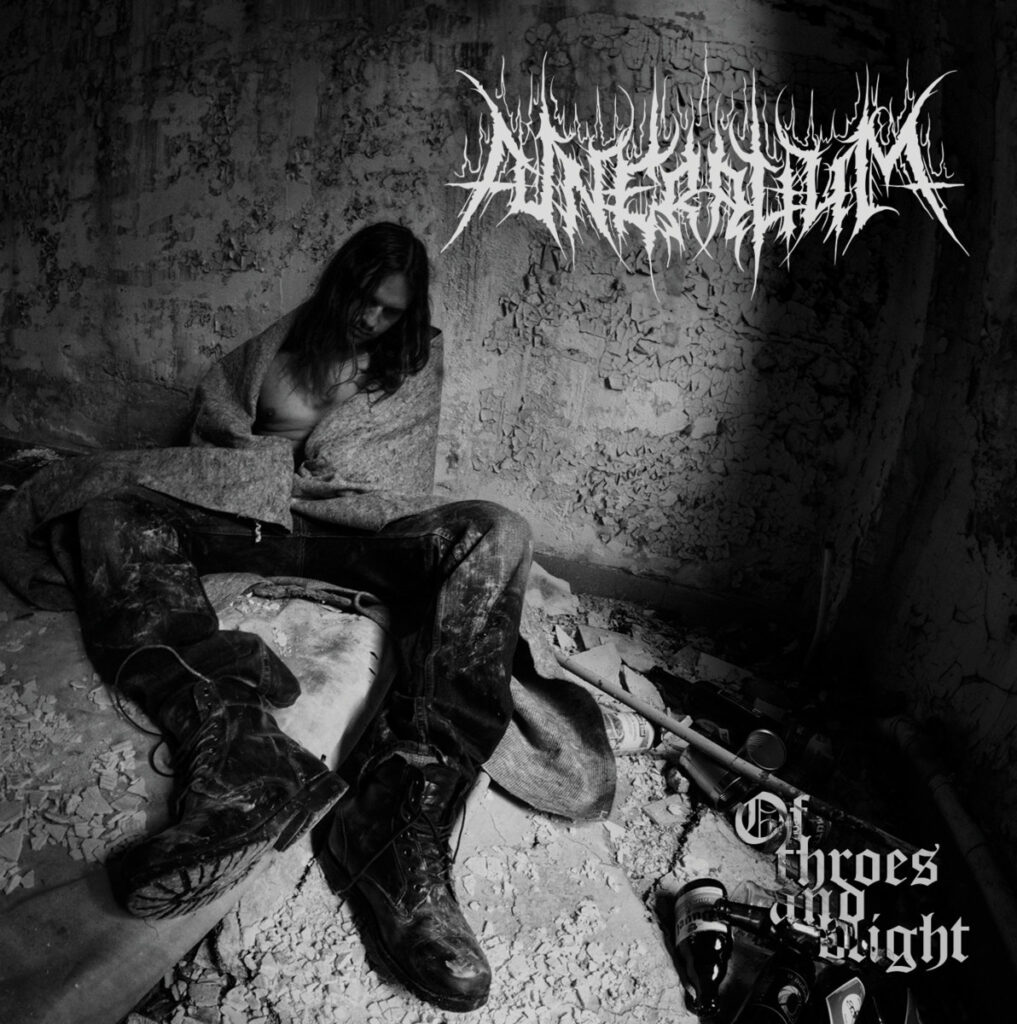
The bloom remained brief. After just a few years and a handful of releases, the approach towards a real, distinct phase of its own fell apart. The playing style wasn’t commercially a guarantee for success, even though its proximity to DSBM could have caught on for. The musical and subcultural plateau remained correspondingly small, but it still occasionally produces new, interesting representatives and releases. Funeralium, in particular, impress with consistent quality. But other acts also take up ideas from Torture Doom or create entire full length records within this genre.
Notable among the newer bands are the Italian Monumenta Sepulcrorum (2011: “A Pact for the Suicide“), the follow Up to the Sad Sun: The Nulll Collective (2022: “Cerberus Trisector“), the French Disjecta Membrae (2025: “Antiphona“), a One-Man-Project by the Funeralium Member Asmael LeBouc, the Chilean (actually active since 2005) Lacrymae Rerum (2017: “The Flies“), the Panamanian Doomslut (2022: “Dissonant Evil”), the Irish Bacterium (2021: “Sunt Lacrymae Rerum“), a Wreck of the Hesperus Sideproject, the Canadian (2018: “Malsanctum“), the Slavic Sorta Magora (2019: “Nič“), the American bands Wallow (2024: “Book of Assailants“) and Hellish Form (2021: “Remains“), as well as the now multinational former Iranian band Tears of Fire (2019: “Aeon कल्प kalpa“).
And somewhere, “Drudging the Mire” by MurkRat, one of my absolute favorite albums, could also be placed in this line, even though the project never fully aligned with Torture Doom or any other Fuenral Doom Subgenre – MurkRat will always be a standout on its own … just saying.
The microgenre does not wither away; however, truly remarkable small genre gems appear rarely, and there are no significant developments or new plateaus to be seen. More often than not, the occasional release of a good album prevents the idea from being completely forgotten during the waiting time for the next Funeralium release.
Closing Thought
The small music subgenre, in its essence, is a music of being torn apart, of an everlasting struggle. It is music that reflects not the pain of mere suffering, but the pain of a permanent transformation. The boundary of the self is not something that can or should be overcome, but rather part of an ongoing process that continually leads the subject to a state of indeterminacy. And this indeterminacy of the self, as described by Žižek, is the central point around which the pain, suffering, and lamenting of Torture Doom revolves. Thus, the genre is a continuous field of research on the pain and the fragmentation of the subject.
The subjective pain and insanity, which is captured in the agonizing guitar riffs and the distorted vocals of Torture Doom, becomes a reflective space for the existential experience of suffering. Precisely this point, this dialectic of suffering, hints at the existential depth of the genre.
